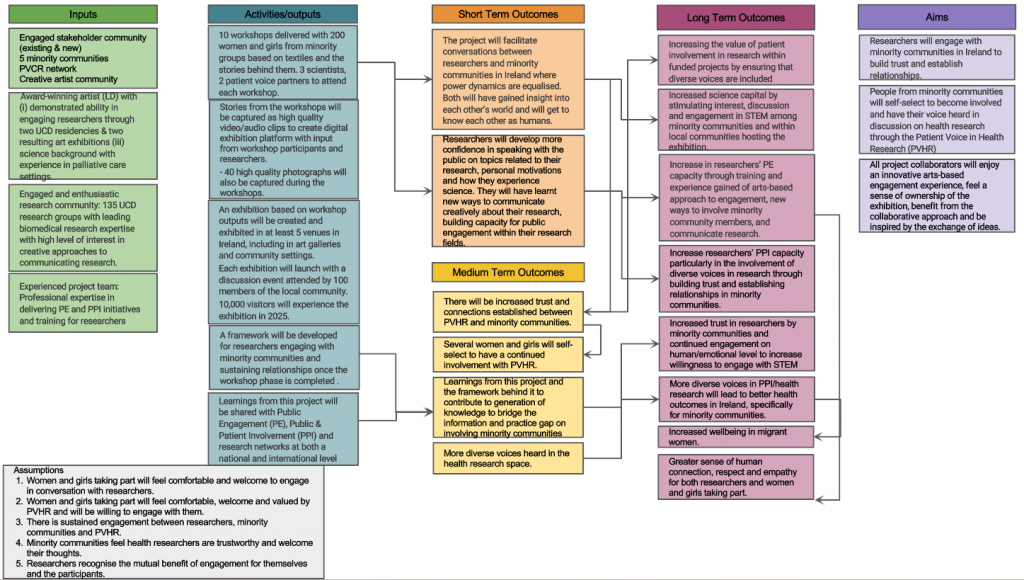EVALUATION & CONSULTANCY
Graphic Science is a leading public engagement agency. Our portfolio of support for public engagement with science and technology includes strategic guidance on the development of PE programmes, evaluation, training researchers in public engagement, working with schools, and resource development. We have extensive experience of evaluation for a variety of programmes and activities including events, educational programmes and strategic engagement processes.
Our evaluation and consultancy work helps clients understand the impact of their public engagement programmes and plan strategically for the future.
How we work
We work closely with our clients from the outset, co-developing logic models and making sure everyone is asking the right questions.
Our evaluation takes a Realist approach. This means we aim to investigate beyond whether an intervention is successful or not, by looking at why it works for whom and under what circumstances. It is an approach that considers the causation and attribution that is commonly overlooked when evaluation is approached as pass or fail.
We do this by utilising a mixed methodology approach of both quantitative and qualitative methods. All our approaches are specifically designed for each project we work on and we consider the capabilities of the delivery team by ensuring the finalised methods are determined collaboratively with clients.

Theory of Change
At the start of every project we work on we will produce a Theory of Change (ToC), usually in collaboration with the client. We use this as a tool to prioritise ambitions and desired outcomes, place them across a timeline and focus our evaluation methods. It is also a useful project management tool, providing a summary of the focus and activities leading to which outcomes. You can see an example of a ToC on the left from the Cut from the same Cloth project.
A ToC is a living document and will be updated and reviewed as the project continues.
Current projects
West of England Combined Authority – Green Futures
The West of England Combined Authority funded 5 different projects across the West of England to engage young people, teachers, parents and employers in activities relating to green skills, jobs and futures over 2 years. It aims to encourage more young people into a green career by highlighting the variety of jobs and pathways available to achieve them. Graphic Science is evaluating this programme. As part of our role, we held initial meetings with all funded projects to produce a logic model that would map closely onto the overarching project logic model designed by WECA. These were then used to design an evaluation toolkit for projects to select their desired evaluation methods. All were designed to map directly onto the logic models of the projects and the overarching Green Futures project as a whole. We are now halfway through the delivery phase and are preparing an interim report to show progress towards the desired outcomes and make recommendations for amendments to potentially better achieve further outcomes by the end of year 2.
Conway Institute UCD – Cut from the same Cloth
Cut from the same Cloth is a project run by the Conway institute at University College Dublin. The project aims to connect minoritised communities with biomedical researchers and get more diverse voices involved in their Patient Voice initiative. Graphic Science was appointed as evaluator. Utilising a mixed methodology approach we designed surveys and in-person evaluation approaches for involved researchers and minoritised communities. The in-person evaluation consisted of five opinion statements, completed with stickers and translated into different languages to accommodate the fact that many participants spoke English as an additional language. The workshops bringing together researchers and participants successfully built trust and encouraged more women from minoritised communities to get involved with Patient Voice.
A key part of the workshops was the co-creation of an exhibition which is currently touring venues across Ireland. To evaluate its impact, we designed a multi-stage survey for visitors to select how time intensive they would like the survey to be and a short feedback sheet to be completed in-situ.

